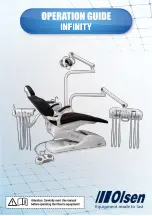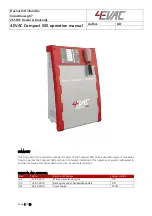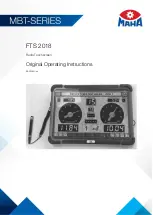
Technic of obtaining ankle systolic blood pressure. The angle of the probe in relation to the long axis of the posterior tibial
artery should be optimized to obtain the best signal.
the pressure will be
lowered in the vessels distal
to the occlusion. An arm-to-ankle pressure gradient
of more than 20 to 30 mm Hg is suggestive of
occlusion at more than one level. It has been
found that the ankle/arm pressure ratio correlates
well with the severity of the obstructive process.
4
When the ratio is one or greater, it is unlikely that
significant obstruction is present. Similarly, rest
pain is rare when the ankle/arm pressure ratio is
greater than 0.5.
There are some patients in whom the ankle pressure
i s n o r m a l o r n e a r l y n o r m a l a n d w h o h a v e
significant complaints of claudication. In these
patients, exercise testing is an extremely valuable
method of evaluation.
8
When the blood flow to a limb is increased by
exercise, the pressure gradient between the arm and
ankle is accentuated.
2
In severe cases of obstructive
vascular disease, the ankle systolic pressure may be
unobtainable following exercise. Depending upon
the extent and location of the disease and the type
of exercise, there may be a period of up to 20 to 30
minutes before the ankle pressure returns to normal
levels. The routine vascular examination should
include stressing the patient with some form of
exercise and measuring the arm and ankle pressure
immediately after the activity, using the method
previously described. The form of exercise which
i s s e l e c t e d w i l l d e p e n d u p o n t h e i n t e r e s t ,
requirements, and resources of the physician. In
our clinic, all patients have been exercised on a
level, motorized treadmill at 3 mph to the point of
claudication, or a distance of 1,000 yards. This is
an indication of how far the subject can walk at a
marching pace on flat ground and is an objective
assessment of his complaints of claudication.
Strandness and Bell
3
have found that by angling
the treadmill at 12% grade and at a speed of 2
mph the amount of work involved is increased and
p r e s s u r e g r a d i e n t s a r e a c c e n t u a t e d . N o r m a l
subjects can walk five minutes with no difficulty
and no drop in ankle pressure. A patient propelled
treadmill may also be used with a metronome. The
p a t i e n t i s i n s t r u c t e d t o s t e p e a c h t i m e t h e
metronome beats and, in this inexpensive way, the
functional and provocative test of the patient’s
exercise capacity can be carried out.
Tw o l e s s e l a b o r a t e m e t h o d s o f e x e r c i s i n g
patients are available and may be used in office
practice. Carter
8
has recently used active plantar
a n d d o r s i f l e x i o n o f t h e f o o t a g a i n s t a
OFFICE TECHNICS FOR VASCULAR TESTING
- Hagood et al
FIG 2
SOUTHERN MEDICAL JOURNAL, Vol 68, No. 1
19
Содержание 915-BL
Страница 2: ...2 Parks Medical Electronics Inc Aloha Oregon U S A ...
Страница 24: ...24 Parks Medical Electronics Inc Aloha Oregon U S A ...
Страница 26: ...26 Parks Medical Electronics Inc Aloha Oregon U S A Appendix ...
Страница 27: ...27 915 BL Dual Frequency Doppler Appendix ...
Страница 28: ...28 Parks Medical Electronics Inc Aloha Oregon U S A Appendix ...
Страница 29: ...29 915 BL Dual Frequency Doppler Appendix ...



































